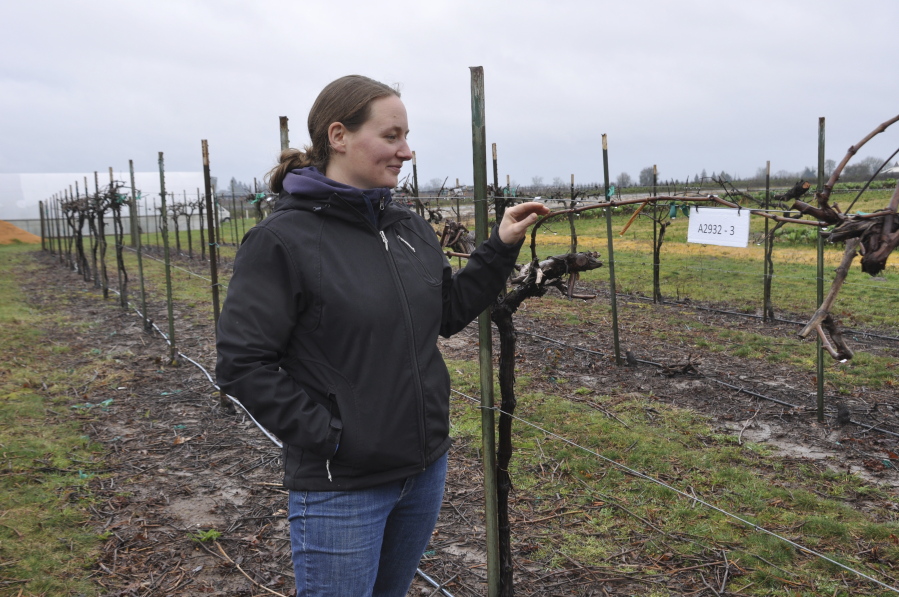AURORA, Ore. — Oregon knows wine grapes. The vineyards growing pinot noir and multiple other varieties have won justifiable acclaim, as the success of the state’s wine industry attests.
But work done at Oregon State University’s research station in Aurora may help open an opportunity for growing table grapes, the sweet snackers that now come piling into grocery stores from California, Mexico and Chile.
Amanda Vance, a faculty research assistant, spent three years evaluating cultivars planted at OSU’s North Willamette Research and Extension Center, or NWREC. Her work, which has been accepted for scholarly publication, identified varieties that might be suitable for commercial growing in the Willamette Valley.
Not that Oregon is suddenly going to be shipping truckloads of Thompson Seedless out of state. Instead, Vance said table grapes might increasingly become part of what producers take to farmers’ markets or sell at roadside stands.
“I think there’s good potential for small, diverse farms to add them into the mix,” she said. “We’ll probably not grow them on a large scale.”
Vance’s research came about partly by happenstance. University berry and fruit breeders sometimes informally share their work with counterparts at other institutions, who grow them as a courtesy to see how they do in other regions, or with an eye to future research of their own. OSU’s North Willamette center has 41 cultivars on a one-third acre demonstration plot, including several selections from Cornell University. In 2006, NWREC accepted new table grape cultivars from John R. Clark, a noted University of Arkansas plant breeder and horticulture professor.
Clark wanted to test his new selections in the Willamette Valley, and afterward came to visit and taste the grapes, but they hadn’t been evaluated until Vance began work on them in 2014.
Vance has worked four years at NWREC, where she manages research fields and does day-to-day data collection and analysis. She has a background in viticulture, however, and the grapes intrigued her. She selected 13 cultivars to study, eventually eliminating three of them because they weren’t working out.
Vance said the most promising of the cultivars are neptune, a green grape from Arkansas with high yields year after year; canadice, a smaller red grape from Cornell with good flavor and uniform clusters. The best of the newer varieties from Clark is called A2932. It’s a green grape with nice-sized fruit, Vance said, and it will be named and propagated over the next year or so. Vance is doing a mini-trial this year with A2932, comparing cane pruning to spur pruning methods.
Two other promising Arkansas cultivars, joy and faith, are purple grapes with variable size in clusters, but good yields.
Vance said the research does not include an economic analysis, but people thinking about growing table grapes will find information such as yield and cluster weight when the study is published.



